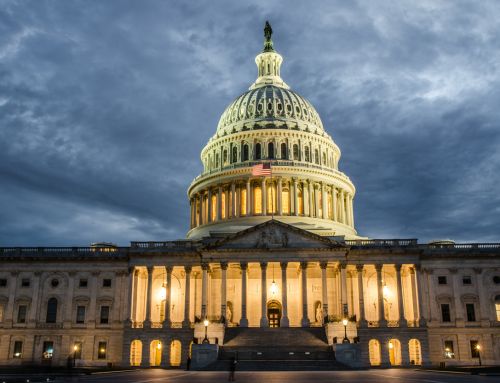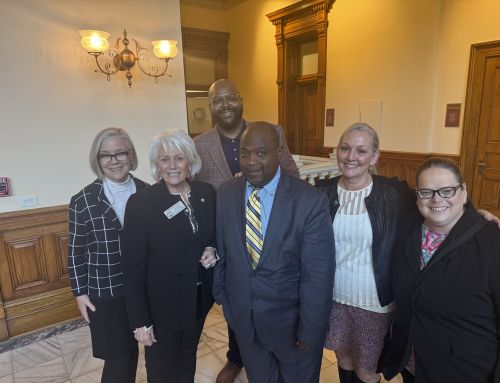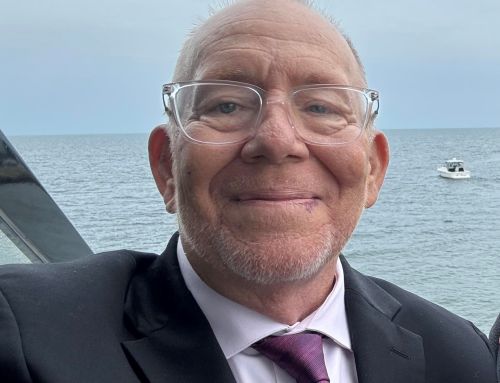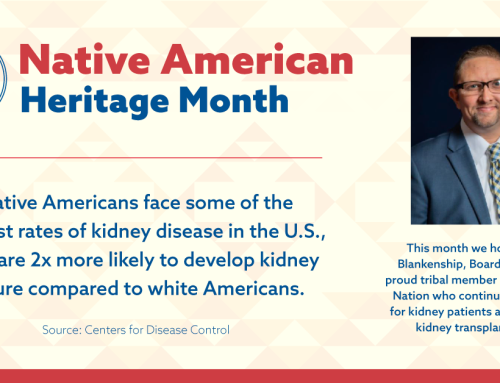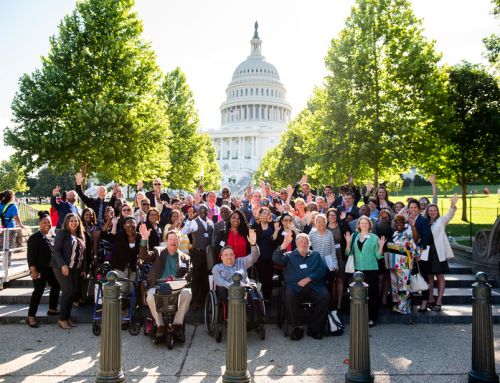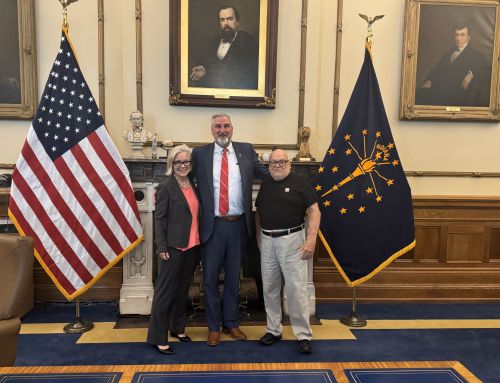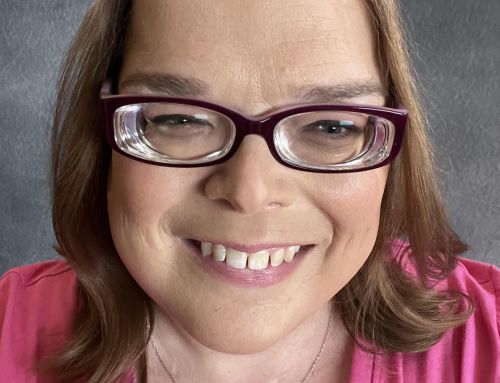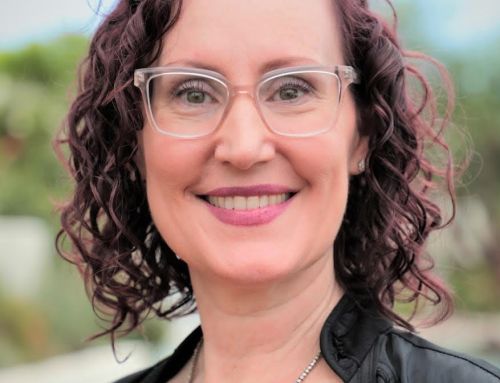Each year—typically during the summer—the Centers for Medicare and Medicaid Services (CMS) puts out rules for how they are going to pay for dialysis treatment. The rules reflect CMS’ latest policies, and organizations have the opportunity to provide feedback about the rules before they go into effect on January 1.
DPC provided feedback to CMS regarding their end-stage renal disease (ESRD) Annual Payment rule. DPC’s letter addresses the following important topics for improving ESRD patient care:
- Transitional Add-On Payment Adjustment for New and Innovative Equipment and Supplies
- Anemia Management
- Social Risk Factors and their Impact on the QIP
- The Need for Dental Coverage to Improve Access to Transplants
- Medicare Advantage Enrollment for Beneficiaries with ESRD
We hope that CMS will revise the rule as a result of our feedback in order to ensure patients with kidney disease receive the best possible care. DPC will continue to elevate the patient voice by advocating for favorable public policy.
Read DPC’s full letter to CMS below:
Seema Verma, Administrator
Centers for Medicare & Medicaid Services
200 Independence Avenue, SW
Washington, DC 20201
Re: CMS-1713-P – 2020 Medicare End Stage Renal Disease Payment Rule
Dear Administrator Verma:
Dialysis Patient Citizens (DPC) writes to offer its comments on the above referenced proposed rule as it relates to the 2020 Medicare End Stage Renal Disease Payment.
DPC’s membership, currently 32,000, is restricted to kidney disease patients and their family members. DPC is a patient-led organization. Our by-laws require that the President, Vice President and at least 51% of the Board be current dialysis patients. The non-dialysis patients serving on our Board are former dialysis patients with kidney transplants. Nearly all our volunteer board members have represented their peers on CMS technical expert panels and/or advisory committees of other health care organizations such as the National Quality Forum and Patient-Centered Outcomes Research Institute. DPC also conducts an Annual Membership Survey to ascertain patients’ experiences with their care and views on health policy issues. DPC is committed to promoting access to high-quality dialysis care for individuals with ESRD; to prevention of, delayed onset of, and safe transition to ESRD among individuals with chronic kidney disease; and access to kidney transplantation as well as to other alternatives to dialysis that may emerge.
In its latest Report to the Congress on Medicare Payment Policy, MedPAC estimated that dialysis facilities had a -1.1 Medicare margin overall in 2017, with more extreme negative margins experienced by rural facilities and facilities in the three lowest quintiles of treatment volume. The viability of dialysis clinics outside regions of high population density rests entirely on reimbursements from commercial insurers. However, commercial insurance coverage for dialysis is currently under attack by insurers, employers, and powerful labor unions. Last year, legislation that would have curtailed commercial reimbursements passed the California legislature but was vetoed by the then-governor. This summer, similar legislation again passed the legislature and could be signed by the new governor. But even laying aside this situation, we know that, demographically, more Americans are aging into Medicare and relatively fewer incident ESRD patients may have commercial coverage in coming years.
In sum, the generous access to dialysis that patients have enjoyed faces a looming threat. We see anecdotal evidence in our news clips of facilities closing, usually with the explanation that the clinic—typically in a geographically isolated area—is simply not profitable. For instance, Fresenius Medical Care of Fort Scott Kansas, the only dialysis clinic in that community, is closing September 30. The next-nearest facilities are 25 and 35 miles away. The Agency needs to be prepared to address access problems before, not after, they surface. One area that we have mentioned before is the need to eliminate unnecessary payment adjusters which, rather than guaranteeing access for more costly patients, end up draining money from the system when they fail to add back dollars subtracted from the base rate.
Transitional Add-On Payment Adjustment for New and Innovative Equipment and Supplies
We appreciate the commitment that the Department has made, most notably with the Kidney Innovation Accelerator program, to acknowledging and addressing the lack of innovation in the treatment of dialysis patients. The provisions of this Rule show an understanding that the ESRD payment system is a barrier to the adoption of new technology.
We generally agree that the new technology add-on payment under the Hospital IPPS is an appropriate starting point for discussion of new technology adoption within a bundled environment such as the ESRD PPS. But there are two principal differences between the hospital and ESRD payment systems. First, hospital DRG payments can be modified based on changes to input costs. Second, hospital episodes are acute, time-limited events, while ESRD is a chronic disease that is treated longitudinally until the end of the beneficiary’s life. Typically, chronic diseases are treated by medications and are not subject to the limitations of a payment bundle. Of course, that could change in the future, which makes it all the more important that the Agency demonstrate here Medicare’s ability to foster dynamic improvements within a chronic care bundle. We are concerned that the Rule does not acknowledge the uniquely disadvantaged circumstances that dialysis patients face relative to beneficiaries with other chronic diseases.
The Rule as proposed does not go far enough to guarantee patients access to new technology. Specifically, by leaving a funding “cliff” at the end of the two-year pass-through payment window, we believe that the proposed pathway leads to a dead end.
Our discussion will focus on Theranova, an enhanced dialyzer. This component is designed to filter larger molecules that conventional dialysis cannot. There is certainly face validity to the theory that this product could reduce hospitalizations and thereby save Medicare Part A funding, but no evidence from randomized controlled trials yet exists to confirm this. However, it is believed that this enhanced dialysis reduces patients’ recovery time, a crucial element of dialysis patients’ quality of life.
Overwhelmingly, dialysis patients surveyed last year in DPC’s annual member survey reported that the condition they would most like to see addressed by new technology is the fatigue and low energy they typically feel (59%). 37% of patients specifically mentioned the “washed out” or “drained” feeling they experience while recovering from dialysis. These responses are as high or higher than those related to the physical constraints of dialysis that would be addressed by the more prominent and glamorous innovations under development, wearable and implantable artificial kidneys.
We know that American dialysis providers are committed to testing the new dialyzer and expect they will do so during the two-year window when they can be reimbursed for doing so. But, because of the cliff at the end of the window, we doubt that clinics will test it widely, because the more patients the technology is offered to, the more patients it must be taken away from when the period ends. We say this because we do not believe that the increased cost of this dialyzer can be absorbed by the current bundled amount given the financial constraints recounted above; and because clinics are conscious that loss aversion among their customers will engender ill will. We are concerned that the pathway provided in the rule may not lead to any more RCTs than would be expected if the manufacturer or grant money funded such trials. If the technology indeed proves to improve all patients’ quality of life, then an opportunity to buy two years of valuable patient welfare gains will have been lost.
We think it fundamentally unfair that dialysis patients miss out on opportunities for improved care because they are subject to a payment bundle and global budget. This disparity exists solely because kidney failure is treated with a machine rather than by a drug. Since Medicare Parts B and D are not subject to payment bundling or global budgets, patients with other chronic diseases, those that are treated by drugs and biologicals, have access to new treatments regardless of whether those treatments even improve outcomes. It is frustrating that the Agency does not acknowledge the concession of kidney stakeholders that new money should not be added to the bundle unless it represents quantifiable gains in longevity, fewer complications, or improved quality of life. To our knowledge, no other disease constituency of the Medicare program makes such a concession; in every other area, patients can demand, and typically receive, access to any new FDA-approved treatment ordered by their doctor, regardless of cost.
We are also concerned that if the device reduces complications and thereby reduces the total cost of care for ESRD patients, but that these savings are not reflected in the fee-for-service payment system, the device will be offered to Medicare Advantage enrollees but not to FFS beneficiaries. This could happen if capitated entities recognize savings but Traditional Medicare does not. This would tilt the playing field in favor of MA plans and unduly influence choices at open enrollment time if patients are told, “if you want to use the enhanced machine, you need to be in a health plan.”
While cost-effectiveness need not be demonstrated for Medicare coverage in other areas, we think the integrity of the ESRD bundle can be maintained while still permitting access to new technology by revising the proposal to add new money to the bundle when, after two years of testing, the new technology demonstrates additional benefit over the previous technology. The model would be the pharmaceutical pricing regime in Germany, which sets a price for new drugs that represents the value of the improved outcome over the comparator. This approach would retain all of the advantages of the prospective payment while negating its principal disadvantage, stasis. It would encourage the development of new technology that improves outcomes while discouraging the marketing of “me-too” products—and would represent frugality that is not evident anywhere else in Medicare payment. As proposed, the rule does nothing to incentivize investment by venture capital in the technologies being invented by Kidney Accelerator prize winners.
Finally, we again object to the repetition in this year’s Proposed Rule of last year’s statement that “it is not the intent of a PPS to add dollars to the base whenever something new is made available.” This was a straw man argument then and is even more so now that the “substantial improvement” criterion is being codified. Statements like this do not give dialysis patients hope of a better future.
Anemia Management
The Rule proposes converting the standardized transfusion ratio measure in the QIP from a clinical measure counted toward the performance score into a reporting-only measure in response to concerns raised about the measure’s validity. The Agency and stakeholders have faced many dilemmas over the past decade in ensuring appropriate anemia management and in finding fair and reliable measures. We are not sure that it makes sense to give facilities credit for “reporting” a measure that is in fact derived using claims data from hospitals rather than values collected and reported in a facility; this seems to stretch the statutory requirement of an anemia measure to the limits. We agree that dialysis facilities should not be “adversely affected during [y]our continued examination of the measure,” as the QIP is designed to leave the kidney care infrastructure with lower net federal support. But the measure is some deterrent to stinting in the use of Epogen, always a possibility in a bundled payment environment. We hope the Agency undertakes not only an examination of measurement issues, but also an examination of anemia management practiced in clinics, perhaps through random audits or validation surveys, to monitor compliance and identify any warning signs of stinting.
Social Risk Factors and their Impact on the QIP
Once again, the Rule’s categorical impact analysis indicates that disproportionately larger payment reductions are expected in southern states where ESRD patients, as is the case with the general population, are less healthy; in the urbanized Middle Atlantic region, where many patients are economically disadvantaged; and in US Territories such as Puerto Rico and the Virgin Islands which are trying to recover from hurricanes and in the case of the former, also facing severe economic problems beyond the property damage. Meanwhile, disproportionately smaller reductions will be taken in the healthiest states—New England, the Mountain states, and Upper Midwest which also benefit from lower poverty rates. Such disparities are inevitable when outcome measures account for a greater weight in the QIP score.
We remind the Agency of the ASPE report’s findings on Social Risk Factors and their impact on the QIP and other Value-Based Purchasing scores. The report is now nearly three years old and we have seen no progress in implementing its recommendations. In addition, further research was presented at this year’s AcademyHealth conference documenting the continuing nature of this problem. As we have stated before, we believe that the QIP’s structure should be altered from a nationwide tournament format to a competition within peer groups, so the burden of QIP reductions is equalized and investors are not deterred from operating facilities in the poor and less healthy locales where access is needed the most.
The Need for Dental Coverage to Improve Access to Transplants
Like other kidney stakeholders, we are excited by the initiatives announced in the President’s Executive Order, including efforts to increase kidney transplantation. One policy option that we had hoped would be included is expanding Medicare coverage for dental care necessary to be waitlisted for transplant.
Earlier this year, the Center for Medicare Advocacy released a legal analysis discussing Medicare’s authority to pay for non-routine dental care, which is to say, “instances where dental services are unequivocally integral to a covered medical treatment or procedure.” The memorandum states:
The Medicare statute excludes payment for services “in connection with the care, treatment, filling, removal, or replacement of teeth or structures directly supporting teeth…” Section 1862(a)(12) of the Social Security Act [42 U.S.C. § 1395y(a)(12)]. The provision bars payment when the primary purpose of the dental work is to address the teeth and supporting structures.
Importantly, the plain language of the statutory provision does not prohibit payment for dental services needed “in connection with” treatment of medical issues that extend beyond the teeth and supporting structures. For example, clinical standards and protocols for certain covered medical procedures (e.g., some organ transplants, cardiac surgeries, chemotherapies) require that dental infections be treated to reduce the risk of serious and costly complications.
Given the unique importance of dental issues to care for dialysis patients, and the Executive Order directing HHS to increase kidney transplantation, we are urging Agency personnel who oversee the Medicare ESRD program to develop policy options for dental coverage within the parameters of existing statutory authority.
Kidney failure and dialysis themselves place patients at greater risk of dental problems. Such problems are likely to be exacerbated by side effects of immunosuppressive drugs, which include dry mouth, increased periodontitis and tooth decay, increased incidence of oral mucous membrane lesions due to susceptibility to fungal, bacterial and viral infections, gingival overgrowth, xerostomia, and increased susceptibility to developing cancer. Immediately after the transplant, dental care itself carries risk. Infections in transplant recipients represent the most common postoperative complication.
As a result, transplant centers commonly demand dental clearances for transplant candidates. A 2003 survey of 294 transplantation programs found that 80% routinely requested dental evaluations. 38% of responding programs reported postponements or cancellations of transplants occurred at their facilities due to dental problems.
Because Medicare doesn’t offer dental coverage, it has become common for charities to raise funds for the necessary dental expenses of transplant candidates. However, funds are limited, and charitable assistance can cause an additional waiting list before the transplant waiting list.
The experience of Nancy Scott is instructive. Ms. Scott is a past president of DPC and joined President Trump on stage at the signing of the Executive Order. Ms. Scott had breast cancer and ESRD at the same time. The cancer treatments destroyed her upper teeth, and she needed $6,000 worth of dental work before she could go on the transplant wait list. Since Medicare doesn’t cover this treatment, she was only able to afford the dental work through charitable assistance from the Delaware Kidney Fund, which was paid in installments, not all at once. Although she received her transplant, the dental issue delayed it for a year, meaning that Medicare spent an additional $50,000 or so on dialysis care that it would have saved if she obtained dental treatment immediately.
Under current rules, Medicare covers one dental examination, but does not cover any dental treatments necessary to remedy a dental problem that is found. This means (1) a patient who has a living donor but can’t afford dental treatment cannot get a transplant, costing money to the Medicare program; and (2) further exacerbation of the problem of unequal access to transplants based on patients’ financial resources. We believe that dental coverage for transplant candidates will be cost-effective for the Medicare program and will help reduce disparities. We urge convening of a formal task force within HHS and issuance of a Request for Information to solicit input and develop policy options prior to the next rulemaking cycle.
Medicare Advantage Enrollment for Beneficiaries with ESRD
As we noted last year, the imminent opening of Medicare Advantage program to dialysis patients could result in a paradigm shift for ESRD care. This summer, we asked several questions relating to Medicare Advantage in DPC’s Annual Membership Survey.
In 2005 the Kaiser Family Foundation (KFF) surveyed senior citizens on their knowledge of the recently-enacted Medicare Part D benefit. We used the KFF questions (slightly modified) and answers to benchmark dialysis patients’ awareness of their upcoming MA enrollment rights.
Surveying our members 17 months ahead of MA implementation, we found that only 16% of patients are familiar with the new law (see Exhibit 1). In contrast, when KFF surveyed consumers about Part D familiarity 21 months ahead of implementation, 45% of seniors said they were familiar with it. When dialysis patients who are already in enrolled in MA plans are excluded, only 14% of ESRD beneficiaries had knowledge of the new law. In our view, this is disappointing. When informed of the change, 16% of FFS patients said say they do expect to enroll in a Medicare Advantage plan next year (see Exhibit 2); this compares to 20% of seniors who said they expected to enroll in a Part D plan at a comparable time in 2005. In 2005, 37% of seniors said they did not plan to enroll in a Prescription Drug Plan; only 13% of ESRD beneficiaries say they will not enroll in a Medicare Advantage plan next year.
Our survey found that 81% of ESRD beneficiaries are aware of the annual Medicare Open Enrollment period (see Exhibit 3). This compares favorably to the 73% of seniors reporting awareness in a 2012 KFF survey. However, while 60% of seniors say they review their coverage every year, only 48% of ESRD beneficiaries do so.
We also asked questions from a 2012 survey by the DMN3 Institute on important factors in choosing Medicare coverage, modified to add the importance of keeping one’s own dialysis clinic. Asked to pick the “single most important” factor in selecting coverage, 40% of seniors say “how much it will cost me” and 30% say “Keeping my own doctors.
By contrast, our survey found only 24% of dialysis patients say “how much it will cost me” and 22% say “keeping my own doctors,” although those are the top choices among both populations (see Exhibit 4).
The third and fourth most frequent selections are also the same for seniors in general and for ESRD patients, but these are more highly valued by ESRD patients: While 9.3% of seniors choose “other benefits in addition to my medicine,” that is the choice of 20% of ESRD patients. 7.6% of seniors choose “covering my medicines,” but that is the choice of 12% of ESRD patients. Twelve percent of ESRD patients say that keeping their current dialysis clinic is the single most important reason for choosing coverage.
A 2011 survey, sponsored by eHealthInsurance, conducted by Opinion Research Corporation, asked seniors “How important is it to be able to see your current doctor, when picking an insurance plan?” We asked the same question. Among seniors overall, 22% responded it was “Most Important” and 55% responded it was “Very Important” to keep their current doctor. Among ESRD patients, 56% responded it was “Most Important” and 30% responded it was “Very Important” to keep their current doctor (see Exhibit 4). Similarly, 53% of ESRD patients responded it was “Most Important” to keep their current dialysis clinic, with 29% responding that it was “Very Important” to keep their current dialysis clinic.
We read the results to indicate that patients are unlikely to choose a Part C plan that doesn’t include their current doctor and clinic. This means that insurers that do not want to serve dialysis patients can use narrow networks to discourage enrollments. We wonder if we may see an ESRD-MA market in which regions are, practically speaking, served by just two insurers, each in alliance with one of the major dialysis chains serving the region. To the extent that such alliances are more committed to care coordination and achieve better health outcomes, that may be good for patients, but such circumstances seem unlikely to take shape in sparsely-populated regions and regions with low MA penetration generally. As we stated last year, we think the Agency needs to be proactive in ascertaining MA plans’ strategies for implementing the ESRD Choice Act to ensure that all ESRD patients have meaningful choices in the MA market at the time of 2021 open enrollment.
We suspect that ESRD Choice Act implementation will be impacted by CMS Innovation Center decisions on pending voluntary kidney care payment models. Some dialysis providers are interested in a direct contracting (capitated) model that is supposed to replace the current ESRD Seamless Care Organization (ESCO) model. If the direct contracting option is deemed unworkable by providers, we presume they will seek partners among MA plans. We urge CM and CCSQ to monitor developments at CMMI and resulting market activity and be prepared to exert friendly persuasion, if necessary, to ensure that all dialysis patients will have access to the robust care coordination we have seen in SNPs and ESCOs to date.
Thank you for your consideration of our comments and concerns. If you have any questions or would like additional information, please do not hesitate to contact me or our Government Affairs Director Jackson Williams.
Respectfully submitted,
Hrant Jamgochian, J.D., LL.M.
Chief Executive Officer




